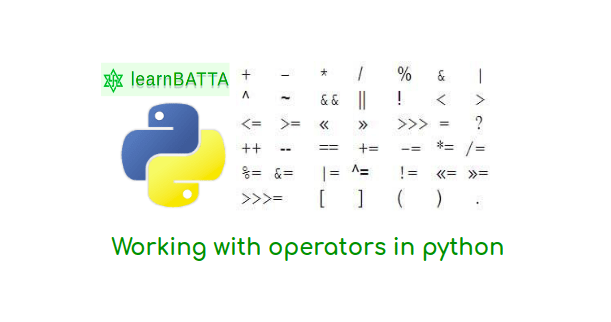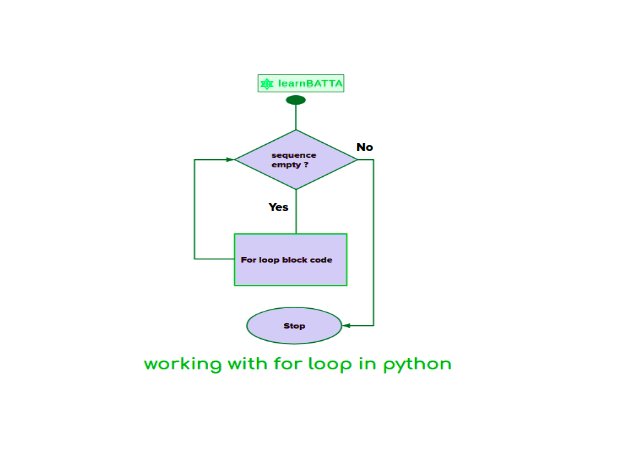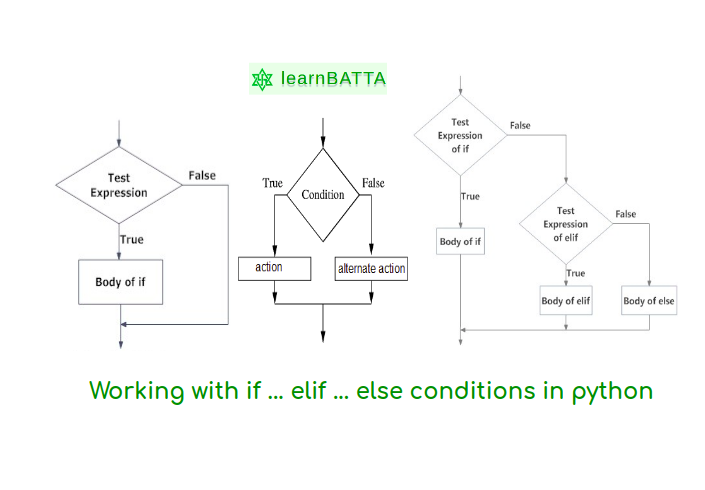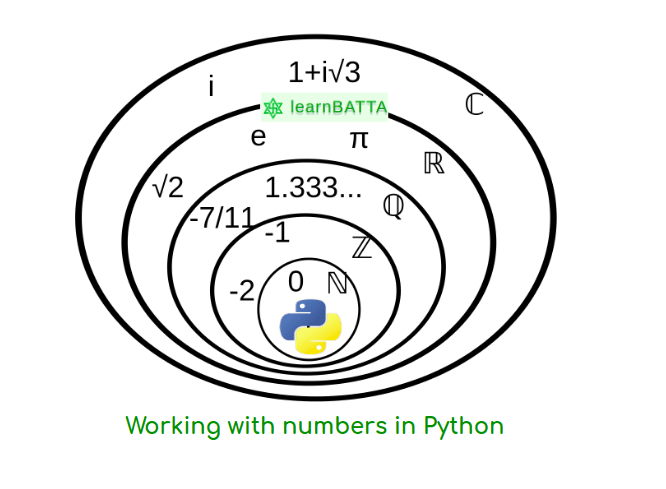Python Working With Operators

In this article we will learn about different types of operators & working with operators in python. An operator is a symbol or a character in programming which takes two operands to perform an action. For example, in the expression "4 + 5" , "+" is an operator It will perform sum of numbers "4" and "5" and returns result "9".
Types of operators in python
- Arithmetic Operators
- Comparison Operators
- Assignment Operators
- Logical Operators
- Bitwise Operators
- Membership Operators
- Identity Operators
Arithmetic Operators
consider the values a = 10 and b = 21
| Operator | Description | Example | Output |
| > | Greater than | print(b > a) | True |
| < | Less than | print(b < a) | False |
| >= | Greater than or equal | print(b >= a) | True |
| <= | Less than or equal | print(b <= a) | False |
Comparison Operators
consider the values a = 10 and b = 20. comparison operators always returns a boolean value either True or False
| Operator | Description | Example | Output |
| > | Greater than | print(b > a) | True |
| < | Less than | print(b < a) | False |
| >= | Greater than or equal | print(b >= a) | True |
| <= | Less than or equal | print(b <= a) | False |
Assignment Operators
Consider the value of b = 20
| Operator | Description | Example |
| = | Assigns the value | a = 100 |
| += | Performs addition & assignment | b += 23 equivalent to b = b + 23 |
| -= | Performs subtraction & assignment | b -= 13 equivalent to b = b - 13 |
| *= | Performs multiplication & assignment | b *= 3 equivalent to b = b * 3 |
| /= | Performs division & assignment | b /= 13 equivalent to b = b / 13 |
| %= | Performs modulus operation & assign | b %= 3 equivalent to b = b % 3 |
| //= | Performs floor div & assignment | b //= 13 equivalent to b = b // 13 |
| **= | Performs exp calculation & assignment | b **= 3 equivalent to b = b ** 3 |
Logical Operators
| Operator | Description | Example |
| and | Returns boolean value if given conditions are true ⇒ True Otherwise ⇒ False | a = 100 a > 90 and a < 110 ⇒ True a > 90 and a > 110 ⇒ False |
| or | Returns boolean value At least one of the given conditions are true ⇒ True Otherwise ⇒ False | a = 100 a > 190 and a < 110 ⇒ True a > 190 and a > 110 ⇒ True |
| not | It inverts the boolean value | not True ⇒ False not False ⇒ True |
Bitwise Operators
| Operator | Description |
| & | Operator copies a bit to the result if it exists in both operands |
| |
| ^ | It copies the bit if it is set in one operand but not both. |
| ~ | It is unary and has the effect of 'flipping' bits. |
| >> | The left operands value is moved left by the number of bits specified by the right operand. |
| << | The left operands value is moved right by the number of bits specified by the right operand. |
Membership Operators
| Operator | Description | Example |
| in | Returns boolean value if it finds the var in given sequence returns true | a = 10 a in [1, 2, 10, 20] ⇒ True a in [1, 2, 110, 20] ⇒ False |
| not in | Returns boolean value | a = 10 a not in [1, 2, 10, 20] ⇒ False a not in [1, 2, 110, 20] ⇒ True |
Identity Operators
| Operator | Description | Example |
| is | Returns boolean value True if both variables points to the same memory location in the RAM | a = 100; b = 100; c = 101; a is b ⇒ True a is c ⇒ False |
| Is not | Returns boolean value | a = 100 b = 100 c = 101 a is not b ⇒ False a is not c ⇒ True |



